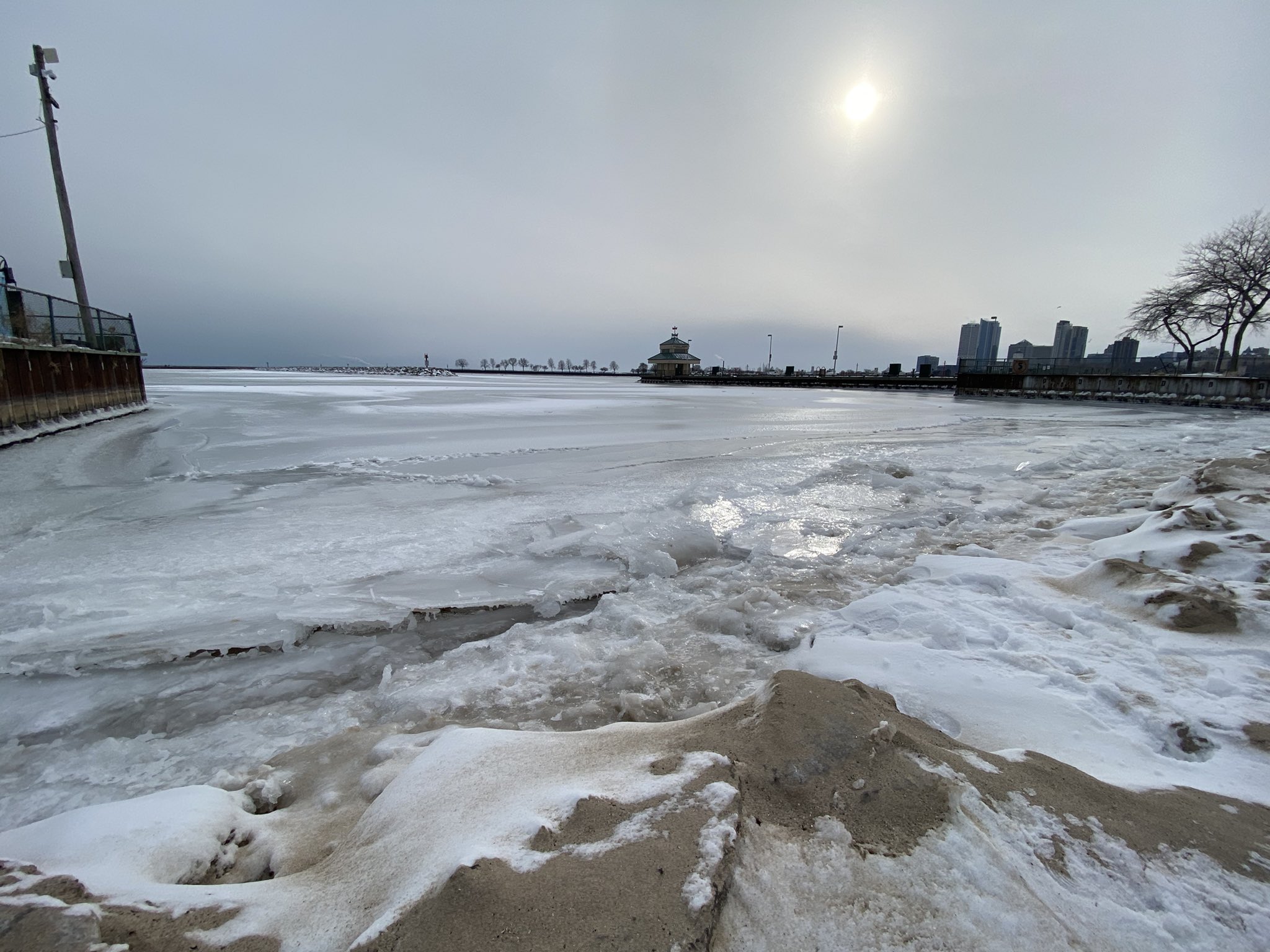MILWAUKEE — There was not a lot of ice along the shoreline of Lake Michigan in Milwaukee on Saturday, as the lake has not frozen over much yet this winter.
The brutally cold weather this weekend could bring some changes, according to the National Oceanic and Atmospheric Administration.
Jan. 2021 was one of the least icy Januarys on record for Lake Michigan since NOAA started tracking in 1973. It ranks the second lowest, next to January 2002.
“For some period in January, we were actually lower than we’d ever been for that time of year,” said James Kessler, a physical scientist at NOAA’s great lakes environmental research lab.
Kessler says only about 13% of the lake has seen ice cover this year.
“Typically, we don’t see the annual maximum so, that peak value for the year until mid-February and sometimes early March, so it is still sort of early in the ice season,” Kessler says.
Kessler showed three different maps of Lake Michigan.
The first map compared Feb. 4, 2021 to Jan. 20, 2021, just two weeks prior.
On the map, it’s evident that ice is beginning to form along the southwestern most corner of Lake Michigan, with more dense ice forming around Green Bay and in the northernmost part of the lake.
Kessler then compared those maps to the map of February 4, 2018, three years ago.
"You can see the lake’s not totally covered, but significantly more this time of year,” Kessler says. "You can see up by the straits significant more ice cover, and sort of along the shore there’s all this land-fast ice that’s sort of stuck to the land if you want to think about it that way."
The reason there is less ice so far this year is that it hasn’t been as cold of a winter compared to other years.
In fact, Lake Michigan’s average temperature on Saturday was 39.5 degrees Fahrenheit, with many parts of the lake still around 40 to 44 degrees.

That should be changing after this weekend’s blast of arctic air.
“When the lake is frozen over, the white ice reflects sunlight much more than open water, you know, dark blue does,” Kessler says. "So once you start getting ice, it’s easier to grow more. So with this cold weather, I would definitely expect ice to go up.”
Kessler says the amount of ice on Lake Michigan can impact the economy.
Less ice is always good for the shipping industry, as ice can shut down traffic on the water, sometimes for days.
But, more ice is good for recreational activities like ice fishing, snowmobiling, and skating. All of that brings in tourism dollars to the lakefront towns.
If you’re planning to go on the lake when it’s frozen, Kessler says you always have to plan accordingly.
“If people are assuming, ‘Oh, this time of year the lakes are definitely safe to go on.' But since we have this big year to year variability, you can’t just look at the calendar and assume that it’s safe,” Kessler says.
Kessler also says people need to remember ice thickness can change every 100 feet or less, so always wear a life jacket while on the lake. He also stressed to dress for the water temperature even if the air temperature is warmer.


